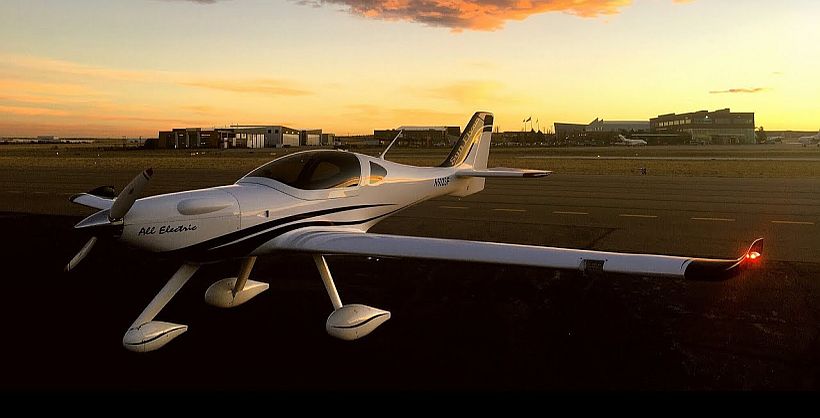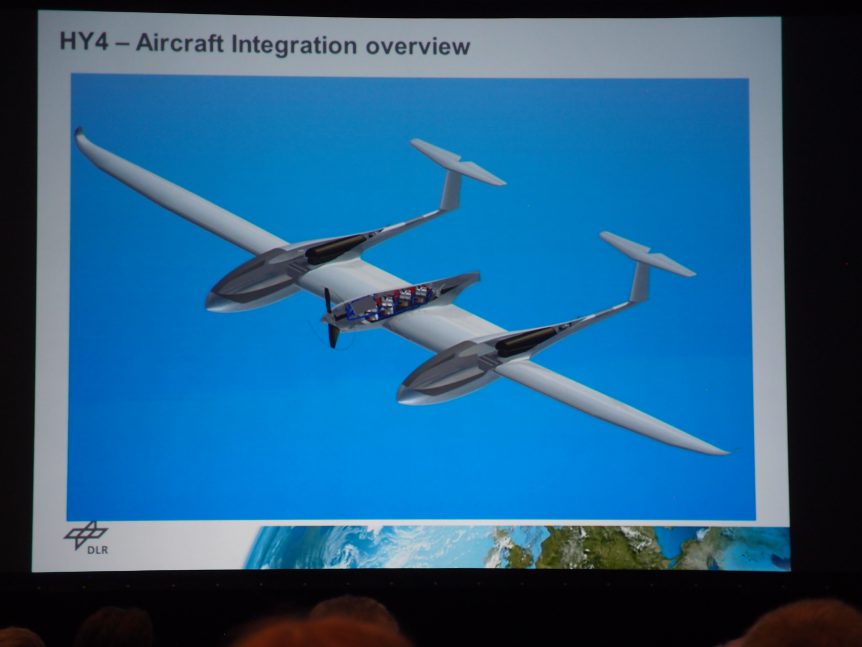George Bye has been enjoying a year filled with great expectations (and accomplishments). With 121 deposits on the Bye Aerospace Sun Flyer 2 from seven countries, the training aircraft needs only two things to make dreams come true for a large number of people – a motor and FAA certification. Siemens Steps In In a joint press release, Bye, CEO of Bye Aerospace, announced a partnership with Siemens that will see the German firm “collaborate on future development of Bye Aerospace’s Sun Flyer 2.” Bye explained, “We are pleased to announce an agreement with Siemens to provide the electric propulsion motor and inverter for the Sun Flyer program. They will be an active partner through the FAA certification and production phase for the Sun Flyer 2.” Siemens will supply the two-seater with its SP70D motor with a peak output of 90 kilowatts (115 hp.) and a continuous rating of 70 kW (90 hp.). Bye explained the nice “fit” with the …
Sustainable Skies in San Francisco
I’m writing this in the first person, rather than the usual third-person voice that allows me to remain objective about things on which I report. In this case, I have been the recipient of much joy over the last ten years from being an observer of the ongoing progress in electric aviation. Dr. Brien Seeley, founder of the Sustainable Aviation Foundation, asked me to begin writing a blog about electric aviation in 2009. One of my original postings concerned a Kitplanes Magazine contributor, David Ullman – who was this year’s Sustainable Aviation Symposium’s keynote speaker. In 2009, he predicted a great future for electric aviation – most of which has come to pass, and some of which he is creating in his hangar with his fully-instrumented wind tunnel and ambitious blown-wing design. He proposes something called USTOL, Ultimate Short Takeoff and Landing, aircraft that will use a dynamic relationship between their power and lift systems. His vehicle for demonstrating this …
Eurosport Crossover Sports Many Tricks
We’re used to seeing motorgliders which pop an engine or motor up on a tall stalk behind the cockpit, then retract it into the slim tailboom for minimum drag. Why not do the same with two electric motors on each side of the airplane, tucking them in a slender fuselage for soaring? Emails with Eurosport’s Tom Leite and perusal of the Portuguese firm’s web site and on-line brochure verified that almost everything on the Crossover motorglider is electric and retractable. Tom notes, for instance, “Our motor/props fold into the fuselage: [they are] 3-phase PMSM motors up to 40Kw at takeoff each.” In the video, see the long, spar web-like structure with lightening holes that separates the two motors as they slide into and out of the fuselage. “Our wing span is set from 9.6 to 15 meters and is electrically operated.” Tom refers to the special version that will have extendable and retractable wings, with tip segments sliding out from …
Sunseeker Duo Shows Completed Form at Friedrichshafen, Moves to Italy
Erik Raymond is moving his shop and Sunseeker Duo project to Voghera, Italy, nestled in Northern Italy between Milan and Genoa. He showed the completed airframe at this year’s Aero Expo at Friedrichshafen, Germany and discussed, no doubt, the future of electric aviation with Axel Lange, the CEO of Lange Aviation. Lange has developed the Antares and Arcus electric motorgliders, both outstanding designs. Following the Expo’s finale, Erik and his wife Irena drove south to Italy, where their enterprise will complete work on the Duo and plan for their proposed trips in unexplored realms– all on solar power. With Solar Impulse crossing the United States (which Erik did in 1990 in Sunseeker I) and more flights planned by other participants, we might see the next few years create an intensified interest in green aviation. Erik notes that, “The solar cells used by the Duo are better than 50% more efficient than those used by Sunseeker II. While Sunseeker II is …
Floating Over the Danube: The Vision of the Little Tailor of Ulm Lives
The beautiful blue Danube River of Strauss waltz fame, “…Rises in the Black Forest mountains of western Germany and flows for some 1,770 miles (2,850 kilometers) to its mouth on the Black Sea. Along its course, it passes through nine countries: Germany, Austria, Slovakia, Hungary, Croatia, Serbia, Bulgaria, Romania, and Ukraine,” according to the Encyclopedia Britannica. In 1811, Albrecht Ludwig Berblinger, a tailor in the city of Ulm near the headwaters of the second longest river in Europe, tried a novel idea – flying across the river on a nicely sewn-together hang glider. His splashdown marked the end of his aeronautical career, but made him famous and an unlikely harbinger of things to come. City fathers have announced, “In the spirit of Berblinger, and continuing his vision, the City of Ulm aims to promote innovative developments in general aviation that makes it possible to perform an environmentally sustainable long-distance flight. The long-distance objective is a competition flight following the course of the Danube along its whole length from source to mouth, as free of …
FlyNano Flight Testing Teased
From the frozen north of Finland comes the news that FlyNano has flown its electric prototype. Originally planned to have both two-stroke and electric powerplants, the five-meter span joined-wing flying boat is now only electric, its makers citing the strides made in development of motors and batteries in the last several years for their decision. Designed to stay under 70 kilograms (154 pounds) empty weight, FlyNano has a maximum takeoff weight of 200 kilograms (440 pounds). Its small size and light weight make it possible to fly, based on the video, but with no specifications for motor, controller and battery. A company press release gives a “speed range of 70 – 140 kilometers per hour (43-87 mph) with a service ceiling of 3 kilometers (9,820 feet). FlyNano’s true airspeed is about 140 km/h at 75% power with a theoretical operational distance of 70 km (43 miles).” The statement of “true airspeed” causes one to wonder at what altitude this speed …
Electravia Makes a Good Showing at Aero Expo
Anne Lavrand, founder and President of Electravia, continues to find ways to expand her company’s product offerings while offering well-integrated packages of reasonably-priced electric aircraft and components. At this year’s Aero Expo in Friedrichshafen, Germany, her firm displayed the fuselage of the Electrolight 2, a modified Fauconnet sailplane, fitted with a 30-hp Lynch-type motor, controller, and batteries. It is the least expensive electric motorglider on the market at only 30,000 Euros ($39,600), and allows powered flight for recharging costs of about 0.65 Euros per hour (86 cents). The motor, normally graced by one of Anne’s wooden e-Props, had a forward-folding “clap propeller” or “bec de canard” (literally, the beak of the duck), a variant on the light carbon fiber propellers that e-Props also produces. This should reduce drag and help improve the performance of the Fauconnet, a French version of the popular Scheibe L-Spatz, which Anne notes was flown by every young German learning to fly sailplanes a few years …
Pantera Rollout at Friedrichshafen
Friedrichshafen is the place to be for new aircraft announcements, with PC-Aero yesterday and Pipistrel today showing off new aircraft. Pipistrel, having won the Green Flight Challenge in September, could not rest on its laurels, today sharing the news that, “The revolutionary 4-seat all composite design, featuring retractable undercarriage, 200 kts cruising speed, 1000 NM range, comfortable cabin and a choice of three powerplants – conventional/hybrid/electric – is presented to the World for the very first time.” Those lucky enough to be at Aero 2012 , hall A5, will doubtless flock to see the Pantera, a graceful design that does 200 knots (230 miles per hour) on its 200-hp, Lycoming IO-390 engine while burning 10 US gallons per hour. This relative fuel economy (a recent Mooney ride saw the airplane consuming 16 gallons per hour at a lower speed) allows Pantera to carry four people 1,000 nautical miles (1,150 statute miles). CEO Ivo Boscarol is obviously proud of his new …
Friedrichshafen Becomes Elektra
Dr. Birgit Weißenbach, who heads up marketing for PC-Aero, the German firm that produces light electric and solar-powered aircraft, sends two pictures from the company’s display at Aero Expo, now taking place in Friedrichshafen, Germany. The display is overflown by a 1/5-scale model of Elektra Two, their anticipated two-seat electric airplane with solar cells, a design intended for travel, training and flying clubs. Another model, the Elektra Observer LT, represents their unmanned “Very Light Electric Aircraft” with solar cells to allow long-duration civil surveillance. On the floor, Elektra One has its full complement of Solar World solar cells, which supplement its battery power. Elektra One Solar has longer wings and a larger solar cell area, both extending its range. Both use the Flytec HP-13.5 motor and controller, associated battery pack, and claim up to three hours endurance and 400 kilometers (250 miles) range. Dipl. Ing. Calin Gologan, founder and President of PC-Aero, will hold a press conference April 18 and …
Green Flight Challenge – Day One
Sunday, September 25 marked the kickoff of the Green Flight Challenge sponsored by Google, a NASA Centennial Challenge managed by the CAFE Foundation, with a thorough technical inspection for each entrant, followed by a weigh-in. Held at the Charles M. Schulz Sonoma County Airport, the event is an event of international importance, despite the small turnout. With only four entrants making an appearance out of the original 13 that had announced and made it through the rigorous design review, there might be cause for disappointment. Consider, though, the Berblinger competition held in April at the Aero Expo in Friedrichshafen, Germany. 36 teams signed up, 24 made it to the Expo, 13 started the course and eight finished. The GFC has a comparable start-finish ratio, with many of the same issues stalling non-starters here as in Germany: lack of funds and schedule, regulation and fabrication difficulties. Despite the dropouts, Pipistrel, Stuttgart University, Phoenix Aircraft, and Embry Riddle Aeronautical University (ERAU) managed to field teams. In a …
- Page 1 of 2
- 1
- 2


